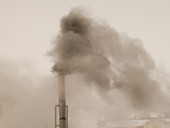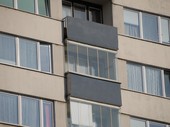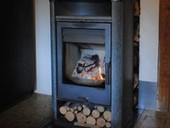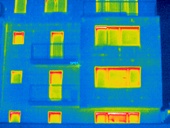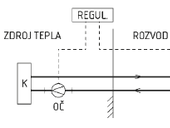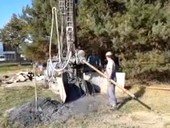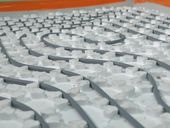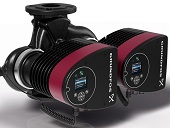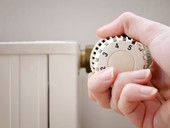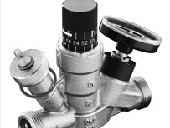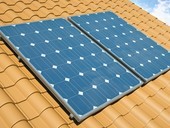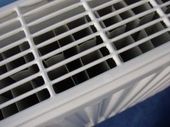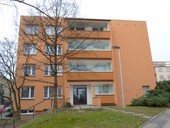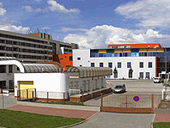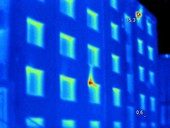The Energy Research Centre test was carried out in various types of boilers and stoves more than a thousand of combustion tests with solid fuel. Based on their results, the authors of this article seeks to define four basic parameters that most influence the quality of combustion and emissions of pollutants.
Archiv článků od 17.9.2012 do 14.1.2013
Making sense of the information in the field of heating is not easy. Users of heating systems are exposed to the pitfalls of commercialism and the effort to save expensive heat is forcing people to meet clashing opinions in an environment of rumors, myths, and chimeras. The one who deceives us can do it deliberately, or is victim of false reasoning, since heating is not an easy field. Let’s get the whole situation a little more transparent.
Nowadays, everyone would like to certainly know how to efficiently convert a stock of fuel into heat which warms up your home. This article focus on method which measures the efficiency of combustion equipment easily. Based on this information, anyone can optimize his/her combustion device and hereby increase its efficiency. This will reduce fuel consumption, which can result in significant cost savings.
The unfavorable trend in the development of carbon monoxide poisoning in the operation of gas appliances category B hasn’t, despite increasing technical performance of these appliances, downward trend. What is the responsibility of manufacturers, operators, assembly and service companies, engineering inspectors and citizens - users in the operation of gas appliances in case of poisoning?
The unfavorable trend in the development of carbon monoxide poisoning in the operation of gas appliances category B hasn’t, despite increasing technical performance of these appliances, downward trend. What is the responsibility of manufacturers, operators, assembly and service companies, engineering inspectors and citizens - users in the operation of gas appliances in case of poisoning?
Mathematical description of a linear dynamic system can be obtained in various ways. Theoretical models are desirable when basic physical laws of nature are known that describes the relationship between input and output signals, mostly in terms of differential equations. If this is not case, approximate dynamic characterization may be received from the statistical analysis of experimental data. The paper describes techniques used in building thermal simulations, with particular focus on state-space models. If excited by real meteorological conditions, momentaneous temperature variations in an enclosure could be computed that are prerequisites for analysis of long-term heating loads, particularly if the model is exploited as a part of the advanced control system.
This paper deals with the issue of comparing simulations for steady and unsteady thermal state at the massive structures. In this paper, computer simulations are compared with real measurements and measurements of climatic data. The evaluation showed that the steady-state temperature can be comparing with real model used after the end of the accumulation phase. It is evident that the requirements for the temperature factor of the internal surface of the solid structures, set by legislation, are a safe assumption.
The paper describes the management of district heating systems with circulating pumps with variable and controlled speed. It is shown that this control method is compared to systems with circulating pumps with fixed speed very advantageous, by substantially reducing power consumption to drive the pumps.
Relatively same heat savings can be achieved with thermal comfort by regulation, or without thermal comfort by switching off the radiators. It depends on how the heating is operated and how heat gains are used in the building. The article contains a simplified example that relations between real and purported savings of heat explains.
The article presents the current state of the issue of flat hybrid photovoltaic-thermal (FVT) collectors, focused on the differences between the basic types of collectors, their advantages and disadvantages. There is also presented an overview of the current global manufacturers. The article aims to highlight the problems but also the opportunities associated with different types of the hybrid FVT collectors.
The heating period 2011/2012 in Prague based on the observation of Prague-Karlov station was 213 days, a little shorter, and with an average temperature of 5,4 ° C, slightly warmer than the long-term average. Year 2012 is leap-year. The basic characteristic is slightly different. Basic characteristic of heat demand for heating is 2 907 D ° (19) degree days, heat demand is much lower than the long-term average of 3 224 D ° (19). It's the second lowest number of degree days of the heating period in the last decade.
Can additionally insulated prefab-panel buildings meet the low-energy standard, or even overcome? The article contains a detailed analysis of the specific parameters of the building and heating system before and after additional thermal insulation of building, supplemented by the results of measuring the actual heat consumption in the period 2010-2011, with output data transferred to the appropriate temperature normal year.
Energy audit in the Czech Republic has twenty years history. The first decade was a period of searching, others ten years were period of legal obligations. The author is one of our first energy auditors. Features personal experience on the development of the methodology, legislation and practical application.
Currently the thermography is commonly used for diagnosis of the building envelope quality. Major purpose is the control of construction details, thermal bridge analysis. Thermography can be used for determining the heat transfer coefficient of the building envelope. Though this method of determining heat transfer coefficient is limited and results may not always be exact. It can be caused by variability of boundary conditions and inhomogeneity of building structure. This article describes the methodology for determination of heat transfer coefficient based on thermographic measuring.
zpět na aktuální články
